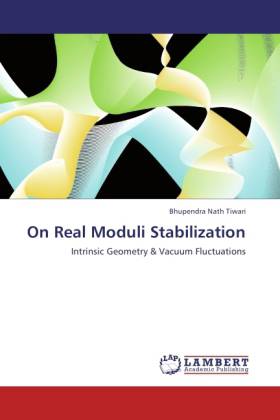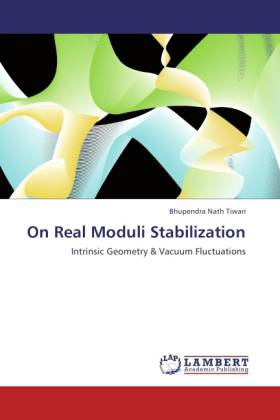
Je cadeautjes zeker op tijd in huis hebben voor de feestdagen? Kom langs in onze winkels en vind het perfecte geschenk!
- Afhalen na 1 uur in een winkel met voorraad
- Gratis thuislevering in België vanaf € 30
- Ruim aanbod met 7 miljoen producten
Je cadeautjes zeker op tijd in huis hebben voor de feestdagen? Kom langs in onze winkels en vind het perfecte geschenk!
- Afhalen na 1 uur in een winkel met voorraad
- Gratis thuislevering in België vanaf € 30
- Ruim aanbod met 7 miljoen producten
Zoeken
On Real Moduli Stabilization
Intrinsic Geometry & Vacuum Fluctuations
Bhupendra Nath Tiwari
Paperback | Engels
€ 66,45
+ 132 punten
Omschrijving
From the perspective of moduli stabilization and physics of D-branes, we consider the role of the real intrinsic Riemannian geometry and describe the statistical nature of vacuum fluctuations. The issue of the wall (in)stabilities is analysed for the marginal and threshold like vacua for arbitrary component moduli configurations breaking down to finitely many U(1)'s. From the notion of the statistical fluctuation theory, we find for both the mariginal and threshold configurations that the Gaussian fluctuations over a given equilibrium vacuum yield a well-defined, non-degenerate, curved and regular intrinsic Riemannian manifold as a function of the vacuum expectation values of the moduli. For a finite component system, we have shown that the global ensemble stability and phase transition of the underlying vaccum configuration algebraically reduce to a finite polynomial as the moduli coupling(s). The perspective study includes local and global stability domains of Higgs moduli, Coulomb branch, Calabi-Yau moduli, heterotic moduli, instanton moduli and the moduli pertaining to topological strings and an ensemble of D and M-particles.
Specificaties
Betrokkenen
- Auteur(s):
- Uitgeverij:
Inhoud
- Aantal bladzijden:
- 116
- Taal:
- Engels
Eigenschappen
- Productcode (EAN):
- 9783846531068
- Verschijningsdatum:
- 12/10/2011
- Uitvoering:
- Paperback
- Afmetingen:
- 152 mm x 229 mm
- Gewicht:
- 181 g

Alleen bij Standaard Boekhandel
+ 132 punten op je klantenkaart van Standaard Boekhandel
Beoordelingen
We publiceren alleen reviews die voldoen aan de voorwaarden voor reviews. Bekijk onze voorwaarden voor reviews.









